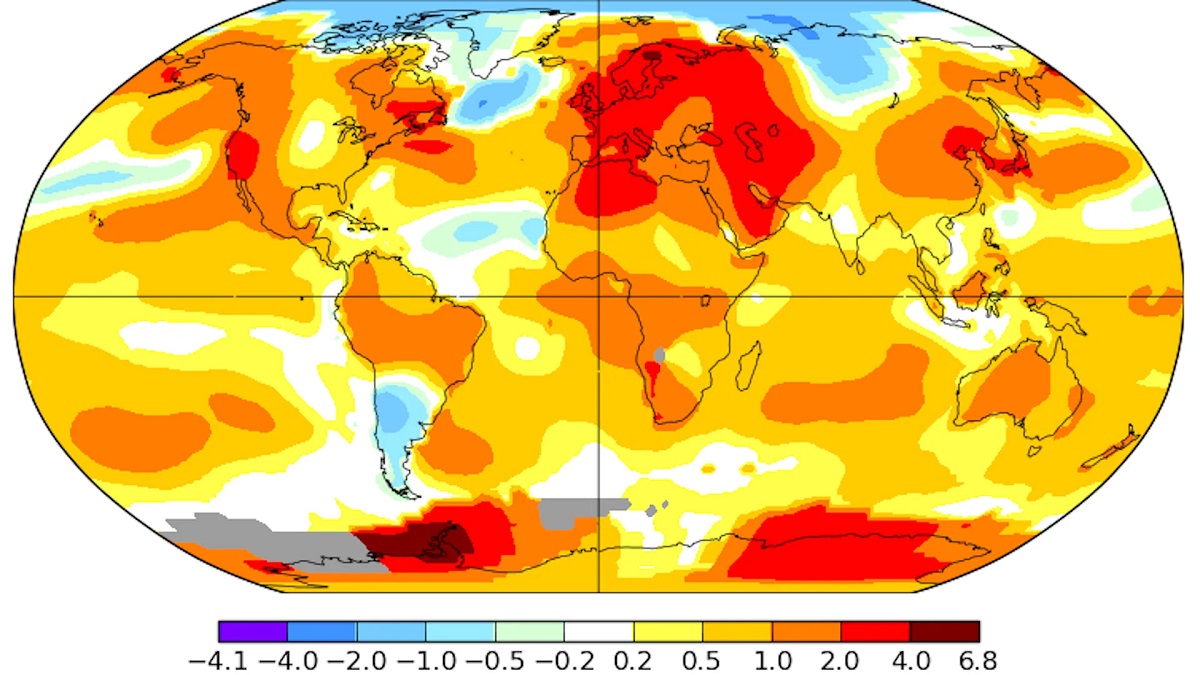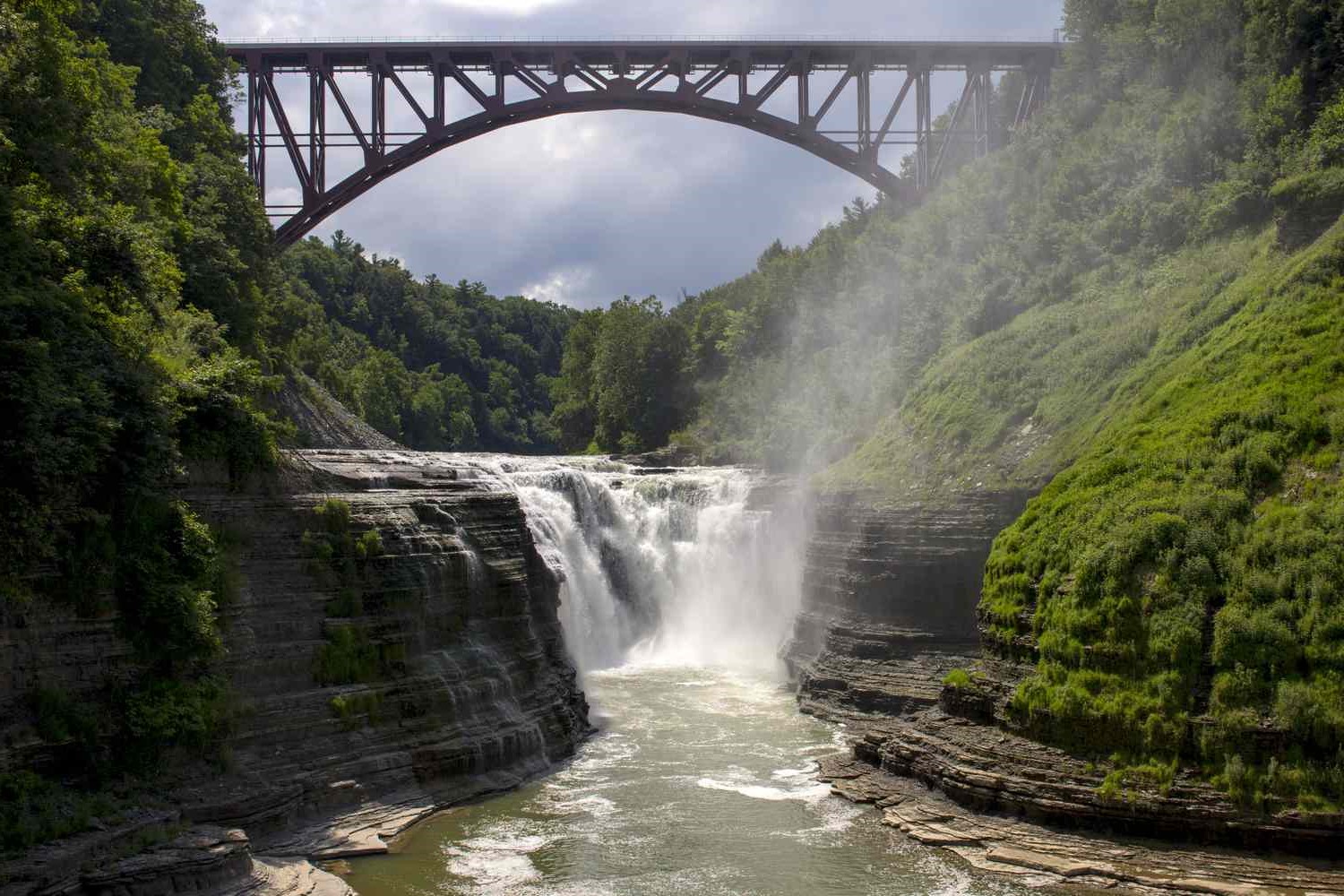Home>Weather and Climate>Map Of Temperature In The United States


Weather and Climate
Map Of Temperature In The United States
Modified: June 2, 2024
Explore the weather and climate with our interactive map of temperature in the United States. Plan your activities and stay prepared with accurate temperature data.
(Many of the links in this article redirect to a specific reviewed product. Your purchase of these products through affiliate links helps to generate commission for Temperatures.com, at no extra cost. Learn more)
Table of Contents
Introduction
Weather and climate play a pivotal role in shaping the world around us. From influencing daily activities to impacting the natural environment, temperature is a fundamental aspect of our atmospheric conditions. In the United States, the diverse geography gives rise to a wide range of temperatures, creating unique climates across the nation. Understanding the patterns and fluctuations of temperature is crucial for various sectors, including agriculture, energy, and public health.
Temperature is a measure of the warmth or coldness of the atmosphere, and it is a key component of weather. It affects our daily lives, influencing the clothes we wear, the activities we engage in, and the way we plan our routines. Moreover, temperature is a critical factor in the growth of crops, the behavior of wildlife, and the prevalence of certain diseases. Therefore, comprehending the distribution and trends of temperature across the United States is essential for making informed decisions in various fields.
This article delves into the intricate details of temperature in the United States, exploring the regional variations, the impact of climate change, and the methodologies used for temperature data collection. By examining these aspects, we can gain a deeper understanding of the dynamic nature of temperature and its far-reaching effects on our lives. So, let's embark on a journey to unravel the fascinating world of temperature in the United States.
Methodology of Temperature Data Collection
The collection of temperature data in the United States involves a sophisticated and extensive process that encompasses various techniques and technologies. The National Oceanic and Atmospheric Administration (NOAA) is at the forefront of this endeavor, utilizing a wide array of instruments and methodologies to gather accurate and reliable temperature information.
One of the primary methods employed for temperature data collection is through a network of weather stations strategically positioned across the country. These stations are equipped with advanced instruments such as thermometers, which measure the air temperature, and data loggers, which record and store the temperature readings. The data obtained from these weather stations form the backbone of the temperature records used for analysis and forecasting.
In addition to ground-based weather stations, satellite technology plays a crucial role in monitoring temperature patterns on a larger scale. Satellites equipped with specialized sensors can capture thermal infrared radiation emitted by the Earth's surface, allowing for the measurement of land and sea surface temperatures. This satellite-derived data provides a comprehensive view of temperature distribution across vast regions, complementing the ground-based observations.
Furthermore, the advent of remote sensing technology has revolutionized temperature data collection by enabling the monitoring of temperature variations in remote and inaccessible areas. Remote sensing instruments, such as radiometers and spectroradiometers, can detect and measure thermal radiation emitted by the Earth's surface, facilitating the assessment of temperature changes in diverse landscapes, including forests, deserts, and polar regions.
Moreover, the integration of advanced computer models and algorithms enhances the accuracy and reliability of temperature data collection and analysis. These models assimilate data from multiple sources, including weather stations, satellites, and remote sensing instruments, to generate comprehensive temperature datasets. By leveraging computational power and sophisticated algorithms, researchers and meteorologists can derive valuable insights into temperature trends and variations, aiding in the understanding of climate dynamics.
In essence, the methodology of temperature data collection in the United States encompasses a multi-faceted approach, integrating ground-based observations, satellite technology, remote sensing, and advanced computational models. This comprehensive methodology enables the acquisition of high-quality temperature data, which forms the basis for climate research, weather forecasting, and the assessment of climate change impacts.
Regional Variations in Temperature
The United States exhibits remarkable diversity in its climate and temperature patterns, owing to its expansive geographical expanse and varied topography. From the frigid landscapes of Alaska to the balmy shores of Florida, the regional variations in temperature paint a vivid tapestry of climatic contrasts across the nation.
Western United States
The western region of the United States is characterized by a diverse range of temperature profiles, influenced by the presence of mountain ranges, deserts, and coastal areas. In states such as California and Nevada, the coastal proximity moderates temperatures, resulting in mild and temperate climates, while the inland areas experience greater temperature differentials, with hot summers and chilly winters. The Rocky Mountains contribute to significant temperature variations, with higher elevations exhibiting cooler temperatures compared to the lower valleys and plains.
Central United States
Moving towards the central states, a blend of continental and semi-arid climates shapes the temperature dynamics. States such as Texas and Oklahoma experience scorching summers and relatively mild winters, with temperature differentials accentuated by the absence of significant geographical barriers. The Great Plains region witnesses wide temperature fluctuations, with hot summers and cold winters, influenced by the absence of moderating coastal influences.
Eastern United States
The eastern seaboard and southeastern states showcase a mix of temperate and subtropical climates, characterized by warm summers and mild winters. The Gulf of Mexico exerts a notable influence on the temperature patterns, contributing to higher humidity and warmer temperatures in states such as Florida and Georgia. The Appalachian Mountains also play a role in temperature variations, with higher elevations experiencing cooler temperatures compared to the low-lying coastal areas.
Northern United States
Venturing into the northern states, including Minnesota, the Dakotas, and Montana, a pronounced continental climate prevails, marked by frigid winters and relatively mild summers. The proximity to the Canadian border amplifies the impact of polar air masses, leading to prolonged periods of cold temperatures during the winter months. The Great Lakes region also influences temperature patterns, with lake-effect snow contributing to localized variations in winter temperatures.
Southern United States
In the southern states, including Louisiana, Mississippi, and Alabama, a subtropical climate prevails, characterized by hot and humid summers, and mild winters. The proximity to the Gulf of Mexico accentuates the warmth and humidity, shaping the temperature profiles across the region. Coastal areas experience moderated temperatures, while inland regions exhibit greater temperature differentials.
The regional variations in temperature across the United States underscore the intricate interplay of geographical, topographical, and climatic factors, contributing to a diverse tapestry of temperature patterns. Understanding these variations is essential for various sectors, including agriculture, urban planning, and disaster preparedness, enabling informed decision-making in the face of dynamic climatic conditions.
Impact of Climate Change on Temperature
Climate change has emerged as a defining global challenge, exerting a profound influence on temperature patterns across the United States and the world at large. The relentless rise in greenhouse gas emissions, coupled with anthropogenic activities, has significantly altered the Earth's climate, leading to discernible shifts in temperature dynamics.
One of the most striking impacts of climate change on temperature is the intensification of heatwaves. Across the United States, heatwaves have become more frequent, prolonged, and severe, posing substantial risks to human health, agriculture, and natural ecosystems. High temperatures can exacerbate heat-related illnesses, strain energy resources, and detrimentally impact crop yields, highlighting the far-reaching consequences of elevated temperatures driven by climate change.
Moreover, climate change has contributed to alterations in seasonal temperature patterns, disrupting long-established climatic norms. Winters have become milder in certain regions, leading to reduced snow cover and altered precipitation patterns. Conversely, summers have witnessed heightened temperatures, amplifying the risk of droughts and wildfires. These shifts in seasonal temperature dynamics have implications for water resources, biodiversity, and the overall resilience of ecosystems.
The impact of climate change on temperature extends beyond the terrestrial realm, encompassing the oceans and polar regions. Rising global temperatures have led to the accelerated melting of polar ice caps and glaciers, contributing to sea level rise and altering oceanic temperature profiles. These changes have profound implications for marine ecosystems, coastal communities, and global weather patterns, underscoring the interconnected nature of temperature dynamics in a changing climate.
Furthermore, the urban heat island effect, exacerbated by climate change, has led to elevated temperatures in urban areas, intensifying heat-related risks for urban populations. The proliferation of impervious surfaces, reduced green spaces, and increased energy consumption in cities has amplified the urban heat island effect, underscoring the need for sustainable urban planning and climate-resilient infrastructure to mitigate the adverse impacts of heightened temperatures.
In essence, the impact of climate change on temperature is multifaceted, encompassing a spectrum of environmental, societal, and economic ramifications. Understanding and addressing these impacts is paramount for fostering climate resilience, implementing adaptive measures, and mitigating the escalating risks associated with changing temperature patterns. By prioritizing climate action, embracing sustainable practices, and fostering global cooperation, we can strive to mitigate the adverse effects of climate change on temperature, safeguarding the well-being of current and future generations.
Conclusion
In conclusion, the temperature landscape of the United States is a tapestry of diverse climatic patterns, shaped by geographical, topographical, and climatic influences. From the temperate coasts of the west to the subtropical embrace of the south, and the continental embrace of the north, the regional variations in temperature underscore the dynamic nature of the nation's climate. The intricate interplay of temperature dynamics holds profound implications for various sectors, including agriculture, public health, urban planning, and environmental conservation.
The methodology of temperature data collection, encompassing ground-based observations, satellite technology, remote sensing, and advanced computational models, forms the bedrock of our understanding of temperature patterns. The integration of these methodologies enables the acquisition of high-quality temperature data, which serves as a cornerstone for climate research, weather forecasting, and the assessment of climate change impacts.
Furthermore, the impact of climate change on temperature has ushered in a new era of climatic challenges, characterized by intensified heatwaves, altered seasonal temperature patterns, and heightened risks for urban populations. The far-reaching consequences of climate change on temperature underscore the urgent need for concerted efforts to mitigate greenhouse gas emissions, foster climate resilience, and implement adaptive measures to safeguard the well-being of communities and ecosystems.
As we navigate the complexities of temperature dynamics and climate change, it is imperative to prioritize sustainable practices, embrace climate action, and foster global cooperation to address the challenges posed by changing temperature patterns. By leveraging scientific advancements, embracing innovative solutions, and advocating for climate-conscious policies, we can strive to mitigate the adverse effects of climate change on temperature, ensuring a sustainable and resilient future for generations to come.
In essence, the intricate tapestry of temperature in the United States serves as a testament to the dynamic and interconnected nature of our climate. By understanding, respecting, and addressing the nuances of temperature dynamics, we can chart a course towards a more resilient, sustainable, and harmonious coexistence with the natural world.













